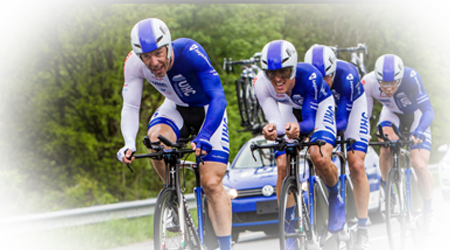A lean journey to improvement reminds me of many examples but none more so than the analogy of a car journey. Some people use a house as a metaphor and talk about building a firm foundation to build on (Vision, strategy, Leadership behaviours, culture, Management system, standards and rules, and plans to meet a value driven purpose, etc) then building the walls to be sturdy (which are the tools of lean and six sigma, in particular the greater principles and concepts such as JIT and Jidoka, Quality and Delivery, or alternatively one pillar is PROCESS (Process to accomplish purpose) and CAPABILITY (What capabilities do we need to solve the problem and meet the purpose) then of course this leads to results at the top of improved Safety, and improvement in quality, cost and delivery.
This is a great analogy but we also like that of a car to make progress towards your goals, aspirations and vision…
Car Journey
The start of a journey is often built on having a destination in mind, a vision and maybe a goal or target time to get there, and ideally along the shortest, easiest and most direct route. Before setting off on any journey there is always an element of understanding and sharing why you want to go to this destination and then planning, preparing and ensuring you have what you need for the journey to get from where you are now to where you want to be. This is especially true if you are taking many people on the journey with you, so that everyone understands the end goal, and follow to the destination, even if you wander off track a little, you are all still guided by the same vision, and aligned, connected and committed to the same purpose, the same end point, and any slight deviations can be assessed i.e. some people may identify a better route to avoid problems for instance.
Knowing why you are doing what you are doing and aligning everyone, with the right people in the car (a team) and the right driver (leader) is essential to lead / take you to your destination and similarly in business, knowing this and where you want to go, and deciding on the right path is equally important. It doesn’t mean the journey won’t have problems along the way, and the end to end point may not be straight, but there are problems and obstacles, delays on every journey and part of the planning is preparing for these scenarios to mitigate and minimise risks, should they happen…! Planning and preparation is everything because problems will always happen and it is predicting them that is part of success..
Of course as we set off on the journey, could be a business journey, we can look behind in the rear view mirror to see where we came from and where we started (which is important to recognise) so we can check and monitor / measure progress as to where we are now, how far we have come (to celebrate) and we can also look through the front window as to where we are heading and not only the next mini milestone, but the big end goal or destination. This helps remind us of the big why and that it isn’t far away and worth pursuing. It provides comfort and also guidance like the North star to help keep on track.
As with any journey with a team, you want to support each other along the way, so speeding off is not necessarily helpful but instead encouraging each other and utilising the skills and strengths of the team to maximise the process and keep everyone focused on the prize and creating a good place to be . It is like the tortoise and the hare, speeding off does not always get you there quicker, and in fact could be slower overall, when people decide they want to deliberately go off on a different route or as the hare, go so hard they burn themselves out.
With regards to the vehicle to get there, well it doesn’t matter too much (i.e. vehicle is the metaphor for lean, six sigma, agile or something else). As long as we have a vehicle, we can get to our destination. Yes, in certain circumstances a Ferrari might be better but on a long journey but wanting to take a lot of people, a Ferrari might get you there quicker, not as a team effort anyway, and it only has capacity for two people!!
What is important is that we try to predict some of the future problems and even competition and try to stick to our plan that we believe and trust is the best way. We might want to look at better ways to make it go quicker by doing an assessment or a diagnostic to see where things could be improved i.e. it might be to tune it for fuel efficiency or it might be to have a service or do maintenance to ensure it is reliable to prevent breakdowns and problems along the way. Also, having a fast car does not guarantee faster overall, due to limitation of speed on the roads, traffic build up. However, the more we improve performance and keep the car moving, the more value we are adding to our customers, the business (the car) and the people (team) in the car to keep people happy and deliver safely to the next destination. (Imagine this in your mind)
Of course if the car is always breaking down, or there are delays, traffic lights, the journey takes longer, frustrations set in, people get frustrated and demoralised, etc. The other good thing is with a car we have a dashboard i.e a clear view of what is going on, so that we can keep track of all the vital signs or health of the car and journey status in one simple to see dashboard that is visible at all times. We can see speed, distance, petrol consumption, any safety issues, and many other key performance indicators that guide us in our decision making. We have a constant visual ahead of any problems and can react quickly and adapt to them. This is essential in a business to see where to focus attention and address any urgent priorities, but also to see the trends overall to see if targets are going to be met or not i.e. see the deviations or gaps in performance to be able to do something about it before it’s too late. If we need to speed up, slow down, stop for a break, get fuel, let people rest or whatever it is, it is essential to have this ability and finger on the pulse.
In any given journey the situation maybe different; the circumstances, the people, the processes, the equipment, the products, the environment, the landscape, the length of journey, the timeframe to get there, and many other factors. With this in mind each journey is situational and there is no 10 or 12 step process that you can use to force fit every single journey. However there are certain markers, guides and questions we can ask to help us define what we may need for our individual journey. Some of them maybe common to every journey and there maybe be some nuances that we have to adapt for our personal journey. These questions help provide a starting point to leading the thinking to plan our journey.



